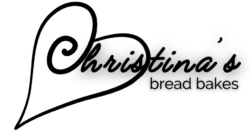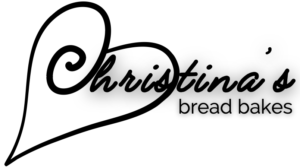MOLASSES BROWN BREAD, WHAT IS IT AND HOW DO YOU MAKE IT?
What is molasses brown bread? It is a dark, rich bread full of molasses flavor, slightly sweetened and fantastic served for breakfast. If you have been to the Cheesecake Factory, a large American restaurant chain, you may have tried their version. If you have not been to this restaurant or you do not live in America, here is a recipe you can make in your kitchen to try this slightly sweet, molasses brown bread. New to bread baking? Check out my post on the 12 Steps to Bread Perfection and Recommended Products for the Bread Baker.
*As an Amazon Associate, we earn a small amount on purchases with no extra cost to you. A way to support our content, thank you!
Click an icon to follow me for more great content.

An Interesting Bit of Molasses History…
You may be familiar with molasses brown bread if you grew up in New England, especially in the Boston, Massachusetts area. Molasses brown bread was commonplace as molasses was readily available. Industrialists imported and stored molasses in the north end of Boston for manufacturing. I suggest a visit to Boston’s Prudential building where you can learn about the Great Molasses Flood. I have been and it’s fascinating. Yes, you read that right, flood! In 1919, a vat containing millions of gallons of molasses ruptured and sent a wave of molasses through the streets of the north end. The deluge sadly killed or injured over 100 people in this Italian immigrant community. Residents reported the smell of molasses on warm days in the north end as it seeped out of the ground even as long as 50 years after the disaster.

Well, thankfully, we will not be trying to swim in thick sticky molasses syrup. Rather, we are using it to create a flavorful brown bread. You can even recount the history of the molasses flood to entertain guests as you serve them this wonderful molasses bread. A good way to keep history alive in memory of the lives lost that fateful day.
What is Molasses?
Molasses is a natural byproduct from the production of sugar from cane or beets. Workers spin sugar during production, separating solids from the viscous liquid, which is molasses. I bake with Grandma’s Molasses; according to their website it “is made of the highest grade sugarcane that is unsulfured and contains no preservatives, artificial flavors or artificial colors” ref. https://grandmasmolasses.com/about/.
People have used molasses for centuries as a sweetener and a preservative for meats. Chefs easily incorporate it into a variety of savory or sweet dishes. It serves as a suitable substitute for maple syrup or honey, as well. One of the most popular recipes using molasses is gingerbread cake or cookies, normally made around the holidays. Don’t care for the flavor of molasses but you are looking for a sweetened bread to bake? Try Challah, a delicious slightly sweetened white bread.

Sharing is CarinG
As always, thanks for visiting me! Would you do me a favor? Take a moment to comment below. Or, if you bake this recipe, take a picture, post it and tag @christinasbreadbakes at Facebook, Pinterest or Twitter. I love to see your bakes. Share one of these yummy Molasses Brown Breads with a neighbor, coworker, family or friends. Help me achieve my vision of “Great Bread for All!” Happy baking, Bread Bakers, until we meet again.


Molasses Brown Bread
Equipment
- 1 Digital Metric Scale
- Bowls Various sizes for scaling ingredients
- 1 Electric Mixer optional – can hand knead
- 1 Bowl for proofing
- 1 Bench scraper
- 1 Half Sheet Sized Pan for baking
- 1 Knife, Lame or Scissors for slashing the top of the bread prior to baking
- 1 Pastry Brush
Ingredients
- 240 g Warm Water 100°F / 38° C (1 cup)
- 4 tsp Instant or Active Dry Yeast
- 400 g Whole Wheat Flour 3 Cups + 2 T
- 240 g All Purpose Flour 1 7/8 Cup
- 4 T Cocoa Powder
- 2 tsp Sea Salt
- 240 g Warmed Buttermilk 100°F / 38° C (1 cup)
- 3 T Molasses
- 2 T Brown Sugar can substitute white sugar
- 4 T Vegetable Oil
Topping
- 1 Egg White
- 4 T Rolled Oats
Instructions
Scaling
- Measure all ingredients using a digital metric scale.
Mixing
- Mix a pinch of brown sugar into the warm water, mix in the yeast until dissolved. Set aside until foamy (about 5-10 minutes).
- Mix together the following dry ingredients: whole wheat flour, AP flour, cocoa powder and salt, set aside.
- Pour activated yeast into the bowl of a stand mixer fitted with the whisk.
- Whisk in 2 cups of the flour mixture.
- Add buttermilk, molasses, vegetable oil and brown sugar. Whisk together.
- Switch to dough hook, add remainder of the dry ingredients.
- Mix on level one (low speed) for 1-2 minutes until all ingredients are moistened and a rough dough forms.
- Switch to level two (second speed) and mix for 5-6 minutes until a smooth dough is formed. The dough should pull from the sides of the bowl but stick to the bottom. It will feel tacky but should not stick to your fingers. If dough is sticky, mix in 1 T of AP flour until it is tacky and no longer sticky.

- Dump dough onto counter and knead a few times into a smooth ball. No additional flour is necessary here, it should not stick to the counter. If it is sticking, use 1 T of additional AP flour and knead until incorporated.

Bulk Fermentation
- Coat the inside of a bowl with spray oil. Place the dough ball into the bowl. Cover and set aside until doubled in size, 45 min – 1 hour.

Punching
- After doubling, dump the dough onto a floured work surface. Gently press the dough flat. Loosely roll the dough away from you.

Dividing
- Cut the loosely rolled dough in two and cover loosely with a dish towel.

Bench Proofing
- Allow the dough to rest for 10 minutes.
Makeup and Panning
- Take one half of the dough and gently flatten the dough. Roll the flattened dough away from you into a tight cylinder.
- Pinch the seam closed.

- Using your thumbs, push the seam firmly into the center of the cylinder. Roll the cylinder over so the seam is on the bottom, pull the cylinder towards you to tighten it further.
- Pinch the ends of the cylinder together and tuck under.
- Place the cylinder onto the baking sheet. Repeat with the second cylinder, placing them at least 4-5" apart to allow them to proof.

Proofing
- Cover the formed cylinders with plastic wrap coated in spray oil to prevent sticking.
- Set aside until cylinders have doubled in size, 30-45 minutes.
- Preheat oven to 350°F / 175 ° C.
- Remove plastic wrap.
- Using a pastry brush, brush the exterior of the bread with egg white. Sprinkle with the rolled oats.

- Cut 6-8 diagonal slash marks across the bread to allow gas to escape during baking.

Baking
- Place the prepared bread into a preheated oven.
- Bake 15 minutes, rotate pan, and continue to bake for 15 minutes more, for a total of 30 minutes bake time. Test interior of the bread using a food thermometer. It is done when it registers 200°F / 93°C.
Cooling
- Allow bread to cool for 20 minutes before slicing.

Storing
- Allow bread to cool completely before storing. Store in a loosely closed plastic bag. Or, slice and freeze.





I would love to use my sourdough starter in this instead of commercial yeast, any idea how I would do that?
Hi Becky – I generally use 100g of sourdough starter in place of yeast in a recipe that uses up to 500g of flour. This recipe calls for a bit more flour, so I would use 120g. Good luck and let me know how it turns out. Happy baking!
This is absolutely delicious! I just made it. The loaves were bigger than I thought, which was an added bonus! Thank you for the very detailed instructions. I followed them exactly step by step
Wonderful, Cameron. So glad you enjoyed them. Keep baking, my friend.
Hi Christina, Have you tried this with a higher percentage of whole wheat flour? Your recipe looks good, and I will try it. I’ll also experiment with more whole wheat flour and see what happens. Thanks for the recipe!
Hello Sora – No, I have not experimented with a higher percentage of whole wheat flour. I do have a 100% whole wheat flour sourdough recipe you may want to check out. Let me know how your experiment goes! Thanks for visiting.
Yes, I would like to try molasses and cacao bread. I have to check Grandma’s molasses for a good quality one (hopefully, I can find it in the UK or have it delivered over here).
Hi Mahaela – I used to order from Ocado when I lived in London, try this link. Good luck!
I have another food to try on for my breakfast. Thanks Christina.
Hi Daniel, yes this is perfect for breakfast, enjoy!
I personally don’t like sweet bread too much but I love molasses in gingerbread cookies around Christmas time. Thank you for sharing this different way of bread baking.
Hi Joanna – I understand that not everyone is up for sweet bread, try some of my more savory recipes, like Pesto Flat Bread.
I can not wait to try making this bread. I know my father will be please when I share it with him. He loves molasses!
Great, Cindy! I hope he really likes this bread.
I love the taste of Molasses this bread looks great as a weekend treat for the family or as an alternative to Banana bread staple in our house.. Thank you
You’re welcome, Jeanine. Happy baking!